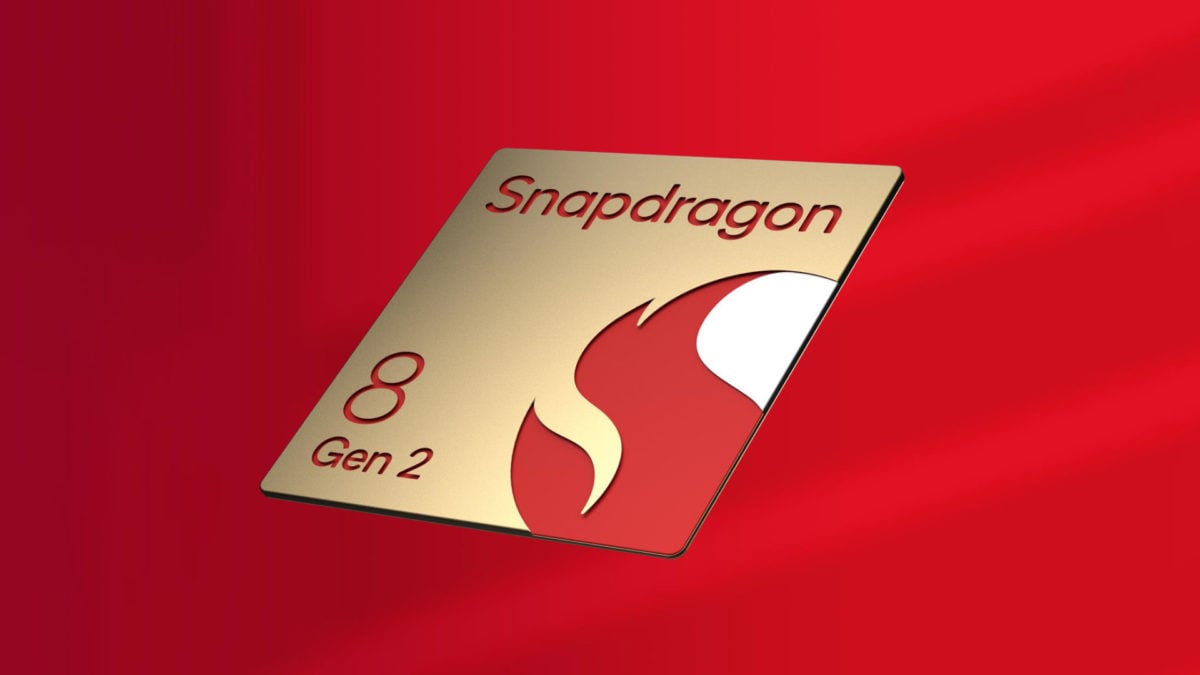Although the Snapdragon 8 Gen 2 smartphones won’t be landing in our hands quite yet, we have spent hands-on time with a reference handset at Qualcomm’s 2022 Tech Summit for an early look at the chip’s performance.
First, some housekeeping before we leap into the numbers. Qualcomm’s reference device is intended to show off the chip’s real-world potential but may not reflect the results we see in retail products. For instance, we saw notably lower performance from retail Snapdragon 8 Gen 1 phones compared to Qualcomm’s reference unit last year. Partners may choose to make further optimizations to performance or power consumption as they see fit, so treat this as a ballpark rather than an absolute reference. Secondly, Qualcomm’s reference phone packed 12GB RAM and 256GB storage, a pretty common setup for a flagship handset.
We had time to run Geekbench 5, AnTuTu, and 3DMark Wildlife tests on the handset. Qualcomm also provided expected results for other benchmarks based on its own testing, which we’ve included in a section of this article for your reference. As you’ll see, the results we were able to run closely matched Qualcomm’s claims, so we’re fairly confident its in-house benchmark results are accurate.
Snapdragon 8 Gen 2 benchmark results
As you’d expect from Qualcomm’s latest chip, the handset does indeed outmuscle its predecessor. With a powerhouse Arm Cortex-X3 core and four, rather than three, middle-tier CPUs, there’s a notable uplift in Geekbench 5 multi-core scores compared to previous years.
The unorthodox quad performance core (2x Cortex-A715 + 2x Cortex-A710) approach clearly pays dividends in multi-core CPU benchmarks, which sees the Snapdragon 8 Gen 2 fly past previous generation smartphones and close the gap on Apple’s A16 Bionic. Qualcomm’s reference handset comes in 23% faster in the Geekbench 5 multi-core test than the ROG Phone 6 and outmuscles the Galaxy S22 Ultra by a colossal 51%. That goes to show just the extent of the Snapdragon 8 Gen 1’s overheating issues but also reminds us to be cautious that the results scored by Qualcomm’s reference phone might not translate over to retail handsets.
Geekbench 5 single-core scores are a little more muted in their uplift but still fairly notable. An Arm Cortex-X3 clocked at 3.19GHz bests a similarly clocked Cortex-X2 in the Snapdragon 8 Plus Gen 1 by 13.8% — a healthy win. Compared to the lower-clocked 8 Gen 1, there’s a 22% single-core performance boost in this benchmark. That said, the Snapdragon 8 Gen 2 still lags Apple’s A16 Bionic here, which retains a healthy 25% performance lead.
Qualcomm’s 1+4+3 CPU setup scores big wins in CPU-based benchmarks.
Qualcomm’s PC Mark Work 3.0 score eclipses the Snapdragon 8 Gen 1 and 8 Plus Gen 1 smartphones we tested throughout 2022. The highest score we clocked this year was 17,089 from the ROG Phone 6 running in X-Mode with a cooler attached, so Qualcomm’s reference phone comes in around 8.5% faster than the best Snapdragon 8 Plus Gen 1 score we’ve seen. Once again, this looks like a major win for the new chipset, particularly if Qualcomm has finally kicked the overheating issues to the curb.
Turning to graphics, Qualcomm’s promise of a 25% performance boost appears to be quite modest. 3DMark Wildlife showcases a roughly 37% uplift over the Snapdragon 8 Gen 1 and a 29% win over the fastest 8 Plus Gen 1 phone we tested. Qualcomm’s reference phone eclipses Apple’s latest iPhone in this test as well, marking a major achievement for gaming potential. However, whether this performance can be sustained in retail handsets remains to be seen.
GPU benchmarks surpass Apple, but we’ll reserve judgment for sustained performance tests.
We went back to look at some old GFXBench results and compared those to Qualcomm’s estimates and again came up with a similar 40% win over the 8 Gen 1 and 27% boost over the 8 Plus Gen 1 in GFXBench’s Aztec Ruins test. But more on that in the next section. Of course, benchmarks aren’t representative of real games, but clearly, the Snapdragon 8 Gen 2 is shaping up to be a very capable piece of gaming kit. We’ll have to wait and see how ray tracing performance stacks up once titles appear in 2023.
Qualcomm reference phones compared
As we noted earlier, 2022 flagship phones handed in significantly lower benchmark scores than Qualcomm’s Snapdragon 8 Gen 1 reference unit. So we’ve dug up last year’s results to compare against Qualcomm’s latest reference unit for a bit more of an apples-to-apples comparison.
To quickly summarize, CPU single-core and multi-scores jumped 20% and 38% between Gen 1 and Gen 2 reference phones, respectively. That falls pretty close to Qualcomm’s 35% claimed CPU uplift and might be more reflective of the gains we see in actual devices.
System-testing Antutu sees a 24% uplift, while PCMark Work 3.0 sees a far more modest 10% gain between the first and second-generation chipsets. Once again, these figures aren’t quite as impressive as when we compared Qualcomm’s reference phone against retail handsets, so we should keep real device expectations in check for now.
Some benchmarks are a little less impressive when compared to Qualcomm’s previous reference phones.
Finally, graphics. A 30% gain for 3DMark Wildlife and a 40% lead in GFXBench’s Aztec Ruins shows that gaming may be the biggest winner for the Snapdragon 8 Gen 2. However, the older GFXBench T-Rex barely moved the needle at all, with a 1.9% improvement. This suggests that older APIs and game engines won’t see the same performance improvements as those using the latest OpenGL and Vulkan graphics APIs.
Qualcomm’s expanded 8 Gen 2 benchmark results
For completeness, below is a list of additional benchmark expectations that Qualcomm provided to Android Authority at the Snapdragon Tech Summit 2022. While we didn’t have time to verify all of these results, we observed similar scores in the tests we had time to run. We’ll be able to run more tests once phones launch in the coming months.
| Expected benchmark results provided by Qualcomm | Snapdragon 8 Gen 2 reference design |
|---|---|
| Geekbench 5 | Single-core: 1,485 – 1,495 Multi-core: 5,050 – 5,200 |
| Antutu | 1,270,000 – 1,280,000 |
| PCMark | 18,500 – 18,900 |
| Jetstream | 167 – 170 |
| Speedometer | 144 – 146 |
| WebXPRT3 | 219 – 220 |
| GFXBench | Manhattan 3.0 Offscreen: 329 – 332 T-Rex Offscreen: 481 – 484 Manhattan 3.1 Offscreen: 224 – 226 Car Chase Offscreen: 129 – 130 Aztec Ruins Vulkan High Tier Offscreen: 65 Aztec Ruins OpenGL High Tier Offscreen: 60 Aztec Ruins Vulkan Normal Tier Offscreen: 178 |
| 3DMark | Wildlife Unlimited: 82 fps Wildlife Extreme Unlimited: 23 fps |
| MLPerf (AI) | Image Classification: 3,915 – 3,920 Object Detection: 1,765 – 1,800 V2.0 Image Segmentation: 945 – 950 Language Understanding: 185 Image Classification Offline: 4,980 – 5,020 |
Snapdragon 8 Gen 2 benchmarks: Early impressions

Credit: Qualcomm
While we wait for retail handsets to land in the coming months, Qualcomm’s reference handset provides us with an early look at what we might expect, and initial benchmarks are promising. We’re looking at a substantial uplift in multi-core CPU performance, owing to the novel CPU arrangement, along with notable wins for gamers. And that’s without dipping our toes into the looming world of ray tracing.
Up next: Smartphone ray tracing is here, but is it the real deal?
However, the big unknowns at this stage are sustained performance and energy efficiency. We’ll have to wait for real-world battery tests to see how the absence of one energy-efficiency core affects handset longevity. We’re also hoping that the move to TSMC’s 4nm process addresses the overheating issues we saw with 8 Gen 1 smartphones. Thankfully we saw positive real-world and stress test results in this regard from Snapdragon Plus 8 Gen 1 handsets, which dropped Samsung’s 4nm node for TSMC’s N4.
All that taken into consideration, if Qualcomm’s claims and reference design benchmarks bear out in retail smartphones, consumers could be in for a major performance jump this generation. But that’s equally down to so-so performance from early 2022 flagships as it is generational performance gains from the 8 Gen 2. Of course, benchmarks aren’t everything, but if peak performance is your thing, the Snapdragon 8 Gen 2 looks promising.

